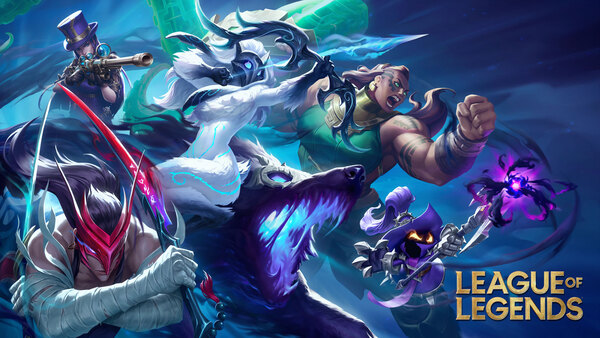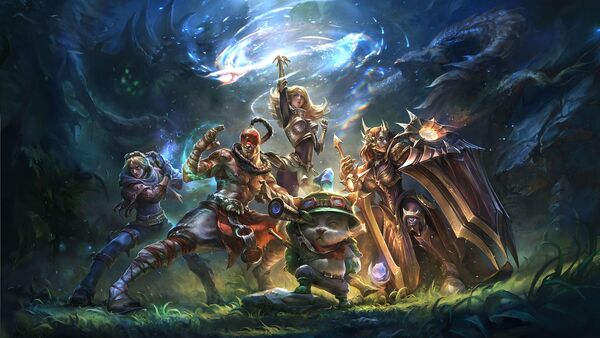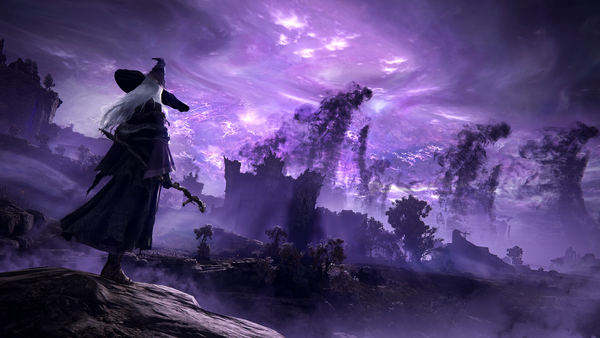Advertisement
Popular Now
Introduction
League of Legends (LoL) has dominated the online gaming scene for over a decade. Riot Games’ constant updates and new champions have kept the game fresh and exciting, but they’ve also led to a significant issue: balancing. One specific challenge that has become a long-standing problem is the issue of "power creep," where new champions are often perceived as stronger than older ones, making the latter feel outdated. This article will dive deep into this issue, exploring the causes, consequences, and Riot’s approach to addressing it.




The Rise of Power Creep
Power creep refers to the gradual increase in strength of new champions compared to older ones. In the early days of League of Legends, champions were relatively simple in terms of abilities and mechanics. Over time, Riot Games introduced increasingly complex kits, designed to make gameplay more dynamic. However, with each new release, older champions began to feel weaker or less versatile.Why Does Power Creep Happen?
Power creep often occurs because developers want new champions to feel exciting and impactful. They introduce more unique mechanics, which naturally makes newer champions stronger in certain scenarios. Players might lose interest in playing or purchasing new champions if they feel too similar to existing ones. Thus, power creep becomes an unintended consequence of keeping the game innovative.The Impact on Older Champions
Older champions like Annie, Garen, and Ashe, who have simpler kits, tend to be overshadowed by newer champions with more intricate abilities and higher skill ceilings. This can lead to frustration among players who have invested significant time into mastering these older characters, only to find them less viable in the current meta.The Evolution of Champion Kits
The evolution of champion design is one of the main contributors to the power creep in League of Legends. Early champions had straightforward abilities, often revolving around basic damage, crowd control, or healing. However, Riot gradually shifted to designing champions with more versatile kits, providing greater utility in different situations.How Complexity Affects Power Levels
Champions like Aphelios, with his five different weapons, or Samira, who blends melee and ranged combat, represent a shift towards more complicated mechanics. While this makes the game more diverse, it also increases the difficulty of balancing these champions without making them overwhelmingly strong.A Need for Versatility
The demand for champions that can fill multiple roles or offer utility in various situations has driven Riot to create more multi-faceted characters. For example, Sett, a relatively newer champion, is a tank, fighter, and even crowd controller in one. This versatility is key to remaining competitive in League of Legends, but it also adds to the power creep dilemma when compared to older champions with singular roles.Meta Shifts and Champion Dominance
The League of Legends meta refers to the most effective tactics available, and it shifts frequently due to Riot’s regular patches and updates. Power creep has a direct impact on which champions dominate the meta, leading to a cyclical problem where newer champions often push older champions out of favor.The Role of Professional Play
In professional play, certain champions consistently outperform others due to their mechanics fitting the meta more effectively. When these champions dominate tournaments, casual players often follow suit, exacerbating the issue of power creep. Champions like Zeri and Bel’Veth, upon release, dominated both pro and casual play, pushing out older champions like Sivir and Kog'Maw.The Patch Cycle and Meta Changes
Riot’s frequent patch updates attempt to balance the game by buffing or nerfing champions, but this often leads to temporary solutions rather than addressing the core issue. Some champions may become meta-dominant for a few patches, only to be nerfed into irrelevance later, creating frustration for players who rely on those champions.Riot’s Approach to Balancing
Riot has recognized the issue of power creep and balancing, but addressing it has proven difficult. The balancing team is constantly juggling player expectations, professional play feedback, and the game’s overall health.Champion Reworks as a Solution
One solution Riot has implemented is champion reworks. This involves completely overhauling outdated champions to make them more viable in the current meta. Champions like Aatrox and Akali have seen full reworks, bringing them back into the competitive scene. However, reworks are time-consuming, and not all champions get the attention they need.The Challenges of Regular Updates
While frequent updates keep the game fresh, they also present a challenge for balance. Every new patch shifts the meta, sometimes unintentionally introducing or exacerbating power creep. Riot has to balance between making meaningful changes and avoiding destabilizing the entire game.
The Role of Items in Power Creep
Items play a significant role in champion power. In Season 11, Riot introduced the Mythic item system, which added another layer of complexity to balance. Some champions benefit more from certain Mythic items, creating a wider disparity between champions who can take advantage of them and those who cannot.Mythic Items and Champion Viability
The introduction of Mythic items such as Goredrinker and Kraken Slayer has increased the gap between champions. Champions like Lee Sin and Riven became even stronger due to their synergy with Goredrinker, while other champions struggled to find similar power spikes.Seasonal Item Reworks
Seasonal item reworks have the potential to help curb power creep, but they also risk making certain champions too strong. For instance, the durability patch in 2022 aimed to make champions tankier, but it ended up boosting champions who were already strong, creating a new layer of imbalance.Power Creep and Player Frustration
Player frustration is a direct result of power creep, particularly when favorite champions become unviable in the meta. This leads to a negative player experience, where older champions feel neglected, and the game’s balance feels skewed toward newer releases.The Psychological Impact
For players who have spent years mastering a specific champion, seeing that champion fall out of the meta due to power creep can be disheartening. This creates a psychological barrier where players feel pressured to abandon their mains in favor of newer, stronger champions.Riot’s Communication with Players
Riot has made efforts to communicate with the community through "Patch Notes" and "Developer Blogs," explaining changes and addressing concerns. However, the complexity of power creep makes it difficult to provide satisfying answers to all players, leading to ongoing frustration.Competitive Integrity vs. Fun Factor
Balancing a game like League of Legends involves a delicate balance between maintaining competitive integrity and ensuring the game remains fun for casual players.Balancing for Pros vs. Casuals
Professional players exploit every nuance of a champion’s kit, often exposing balance issues that casual players might not notice. Riot’s challenge is balancing champions for the pro scene while still making them fun and accessible for the broader player base.Fun Factor and Innovation
Power creep sometimes arises from a desire to make champions fun to play. New mechanics like Viego's "possession" ability or Sylas’ ultimate theft are designed to create unique experiences, but they also introduce significant balance challenges when not executed carefully.The Future of Champion Balancing
As League of Legends continues to grow, the challenge of balancing the game will only increase. Riot must innovate while ensuring that older champions remain competitive and the game retains its competitive balance.Ongoing Patches and Updates
Riot’s current approach relies on frequent patches to address balance issues as they arise. However, this may not be a sustainable long-term solution, as patching alone cannot fully address power creep without fundamentally reworking the game’s approach to champion design.A Potential Overhaul
Some players have suggested that Riot could consider a more significant overhaul of champion design philosophy to prevent power creep from continuing to snowball. This could involve re-evaluating the power ceiling of champions and implementing a more standardized design framework.

















